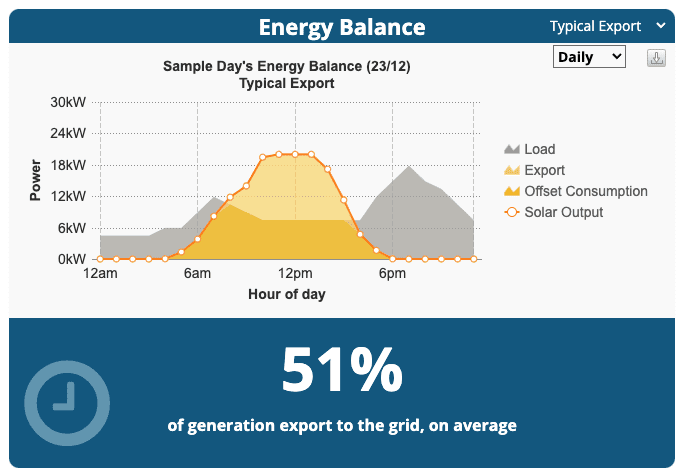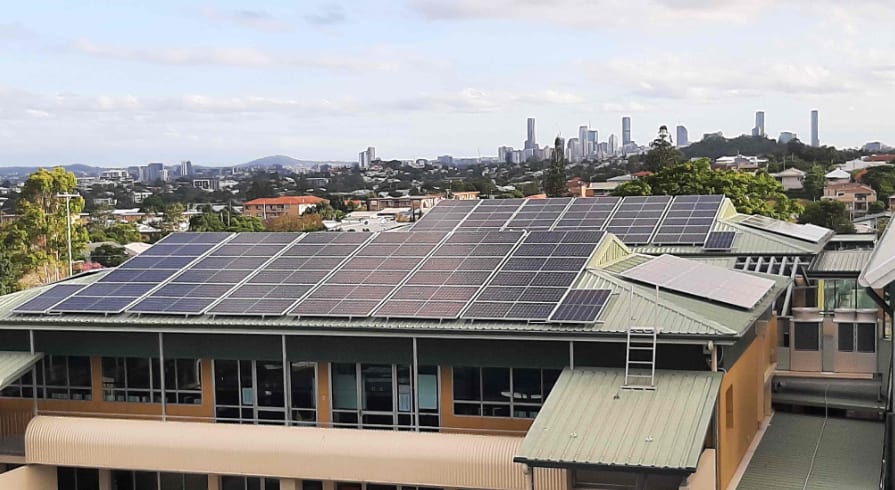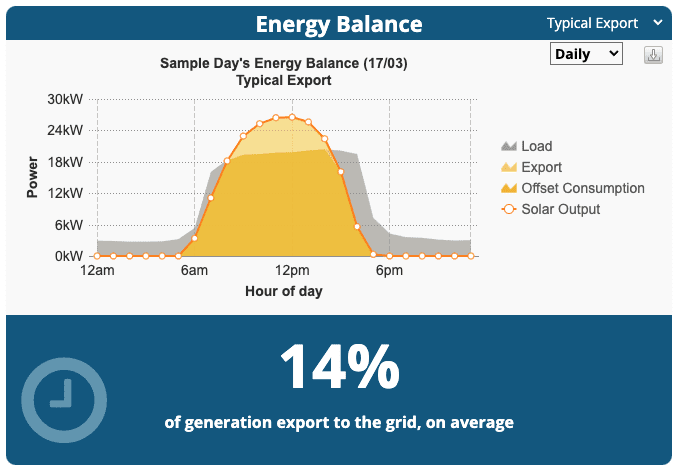Commercial Solar Savings and How Much Can You Save with Commercial Solar
Quick Answer: Businesses in Australia can save between 30% to 70% on their energy bills with commercial solar, with ROI periods as short as 1.8 years. Savings depend on usage patterns, system size, government incentives, and energy tariffs
Why Commercial Solar is a Smart Investment in Australia
Australia’s unique combination of abundant sunshine, progressive energy policies, and rising electricity costs makes it an ideal market for commercial solar. For businesses, solar isn’t just a green initiative—it’s a high-return investment.
At GI Energy, we’ve seen clients slash their power bills, achieve ROI in under two years, and future-proof their operations. But exactly how much can you save with commercial solar? Let’s unpack it.
What Influences Commercial Solar Savings?
Energy Usage Profile
How your business uses energy directly impacts solar savings:
- Daytime-heavy usage (e.g. schools, offices) = Higher self-consumption = Higher savings
- Night-focused usage (e.g. hotels) = Lower direct savings, but batteries or tariff optimisation can help
The above chart shows a load profile and solar production profile for a business that operates from 7am – 5pm Mon – Sun. You can see how the solar production profile perfectly suits this load profile. This means they are only exporting 14% of the solar energy to the grid. Exporting energy to the grid is with very little compared to using it so having such a low export means high savings.

If you compare that to the above chart from a motel where they use more energy early morning and after sunset, the export percentage is much higher at 51%. Because the exported energy is worth less, they will save less money exporting more than the previous example. This example would benefit more from having a solar battery to store some of that exported energy to use early morning and after sunset.
Energy Tariffs & Network Fees
Energy rates vary widely across Australia:
- Some businesses pay as low as $0.05/kWh, others up to $0.35/kWh
- Network fees can be tens of thousands annually if misaligned
Optimising these with the right solar strategy can drastically affect ROI.
System Size & Quality
A well-designed 30kW to 100kW solar system tailored to your roof and load profile delivers the best savings. At GI Energy, we use software to simulate exact performance for your roof, not generic estimates.
Solar Financing Options
- Outright Purchase: Highest ROI, lowest lifetime cost
- Power Purchase Agreement (PPA): No upfront cost; pay only for energy produced at a lower rate than grid
- Lease-to-own: Spread the cost, own the system later
Real Examples of ROI from GI Energy
| Client Type | System Size | ROI Period | Annual Savings | Notes |
|---|---|---|---|---|
| School | 50kW | 2.5 years | $18,000 | High daytime usage |
| Motel | 35kW + battery | 6.5 years | $10,500 | Night usage, partial battery offset |
| Multi-site Franchise | 200kW across 5 sites | 2.1 years | $80,000 | Tariff optimisation played a major role |
| Manufacturing Plant | 99kW | 3.2 years | $27,000 | Shifted tariffs, added smart monitoring |
Pro tip: Ask your energy retailer for your load profile, or let us handle it. It’s the first step to a precision solar plan.
Incentives & Subsidies to Boost Savings
Australia offers generous solar incentives:
Small-Scale Technology Certificates (STCs)
- For systems up to 100kW
- Upfront rebate worth $3,000 to $40,000+
Large-Scale Generation Certificates (LGCs)
- For larger systems
- Ongoing incentive paid per MWh generated
Additional Support
- Solar Victoria rebates
- Instant Asset Write-Off for eligible businesses
We maximise all available rebates for our clients to reduce upfront cost and increase payback speed.
Tip: Ask GI Energy for a custom load profile assessment to know what size battery (if any) makes sense for you. Request your free assessment.
No Upfront Capital? Consider a Power Purchase Agreement (PPA)
PPAs let you install solar without paying upfront. GI Energy funds and maintains the system, and you simply pay for the solar electricity you use at a lower rate than grid power.
PPA benefits:
- No capital investment
- Guaranteed savings
- Fixed, predictable pricing
- Maintenance & warranty fully covered
Best for systems over 100kW.

Flexible Ways to Save: Ownership vs. PPA:
| Model | Upfront Cost | Ownership | Typical kWh Rate | Maintenance Included? |
| Buy Outright | High | Yes | $0.00 (own energy) | Optional |
| PPA | None | Yes (after PPA term) | $0.08–$0.14 | Yes |
| Lease-to-own | Moderate – none | Yes (after lease term) | Varies | Yes |
“We installed solar for a client paying $0.13/kWh. Post-solar, they pay $0.09/kWh via PPA and saved over $60K in year one.” — Daniel, GI Energy
The GI Energy Approach
Unlike generic installers, GI Energy uses:
- Custom load simulations for your exact site
- Tariff optimisation to eliminate hidden costs
- End-to-end support including network negotiations, installation, monitoring, and maintenance
- Zero-cost options like PPAs for risk-free solar
We also help clients switch to better energy contracts—one franchise group saved $80,000 annually with this alone.

Want to Know Your Business’s Solar Potential?
Request a free feasibility study from GI Energy. We’ll:
- Get your load profile data
- Model your savings with custom software
- Explore financing and rebate options
Request a personalised commercial solar quote — we’ll include a full rebate breakdown
FAQs About Commercial Solar Savings in Australia
How much can a business save with solar?
Typical savings range from 30% to 70%, depending on energy use, tariffs, and system design.
What is the average payback period for commercial solar?
Between 2 and 5 years is common. Some clients see ROI in under 2 years.
Do commercial solar systems qualify for rebates in Australia?
Yes. STCs (for <100kW) and LGCs (for larger systems) apply.
Is a PPA or lease a good option for my business?
Absolutely. These options offer savings without upfront cost.
Can solar savings vary by industry?
Yes. Schools, offices, and retail tend to save more than hotels or night-heavy users.
Do I need battery storage for my business solar system?
Not always. Batteries help night-time users but aren’t essential for daytime-heavy operations.
Summary: Key Takeaways
- Commercial solar savings are real and substantial in Australia
- The faster your ROI, the more strategic your energy use and tariff plan
- STCs and LGCs can cut thousands off your install cost
- GI Energy helps with every step—analysis, design, install, and beyond
Ready to reduce your energy bills?
See if you’re eligible for commercial solar savings
FAQs About Commercial Solar
Is commercial solar really worth it in 2025?
Yes. With electricity prices at historic highs and STCs still covering up to 30%, solar and batteries represent strong investments.
How long does it take to install a commercial system?
For smaller systems 40kW or under, typically 4–8 weeks from approval to completion, depending on complexity. For larger systems allow 3 months from order to start date as approvals take longer.
What size system do I need?
That depends on your usage. GI Energy can analyse your consumption and propose a custom system.
Do commercial solar panels need maintenance?
Minimal. Panels should be cleaned and checked annually. GI Energy offers service packages.
Can solar help with EV charging at my site?
Absolutely. Solar and battery integration supports efficient, prioritised EV charging.
Can I get solar if I lease my building?
Yes, but you’ll need landlord approval. PPAs can make this easier to negotiate.
About GI Energy
GI Energy is an award-winning Australian solar and battery installation company with over a decade of experience. Known for ethical practices, high-performance systems, and exceptional after-install support, GI Energy is trusted by homeowners, councils, schools, and major businesses nationwide.
Written by Daniel McCabe, founder and strategist at GI Energy. With over 16 years in the energy industry — from procurement to solar and holistic energy management — Daniel is focused on helping Australians take a balanced, long-term approach to their energy needs.













